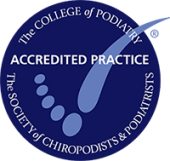Custom Orthotics
Custom orthotics are individually designed and manufactured to ease your pain and discomfort. From your practitioner’s specifications, we make an orthoses to reposition your foot structure. This helps in achieving optimum skeletal balance. In turn, that helps reduce the stress and pain in the joints that are causing you discomfort.
How Are Orthoses Made?
Any custom made orthotic will require a prescription to be written by a practitioner with the specific corrections required. Partnered with a cast impression of your foot, this helps to match your arch profile for the orthotic.
Your custom-made insole will then be made by an orthotic manufacturer using the direction given from your prescription. This ensures you get the most effective treatment possible.
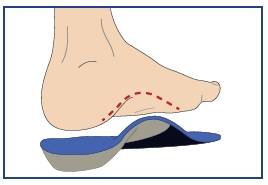
Who Can Benefit From A Custom Made Orthotic?
A custom made orthotic is suitable for people of all ages and backgrounds. They are tailor made to your particular needs. Whether you are an elite sportsmen or less mobile, you can benefit from the effects of having a custom orthotic.
Children can also benefit from the extra level of support during their development, helping to prevent the occurrence of a misalignment.
What Conditions May Be Helped?
Symptoms of poor foot function:
- Foot Pain
- Arch or heel pain
- Leg & knee pain
- Lower back pain
- Bunions
- Blisters
- Toe deformities
- Calluses
- Corns
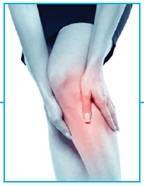
Why Do I Need An Insole?
Think of your feet in a similar way to the foundation of your home. Everything above the foundation is dependent upon it and your feet are not different.
If your foot is misaligned or there is increased stress and force placed upon them, wear and tear is more prominent due to the extra demand placed upon them.
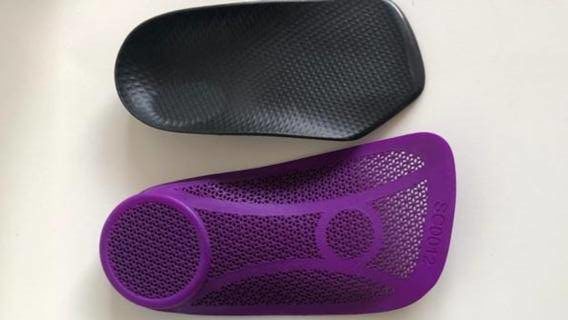
Achilles Pain
Pain at the back of the ankle where the Achilles tendon runs can also present with swelling, stiffness or even weakness.
The Achilles tendon attaches the calf muscle to the heel bone (Calcaneus) and is the strongest tendon in the body.
It is intended to withstand a huge amount of strain but daily activities, footwear, and hard surfaces can take their toll.
If left unattended these symptoms can worsen and even progress to the tendon rupturing. As such, it is important to treat this condition sooner rather than later. Small things, such as icing the area and doing gentle stretching exercises can help. However, it is also important that a professional ensures that the heel bone is held in a stable optimal position.
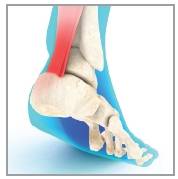
Knee Pain
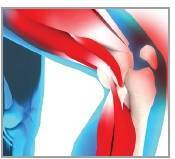
Pain in the knees is often a direct result of the position of the feet. Stand in front of a mirror. Roll your feet in and out. You will notice as you do so that your lower leg rotates and your knees turn in and out.
The knee joint is similar to a hinge joint, like you would see on a door. It is not designed to withstand too much strain in directions other than backwards and forwards. If your feet roll in when you walk or run, your knee joint must twist. This cancause pain underneath the kneecap or around the ligaments, which support your knee joint.
Orthotic Insoles promote a stable platform to support the feet and reduce the amount of internal rotation of the legs. This is achieved with the inclusion of the intrinsic rearfoot and arch supports. They are specially engineered to control your feet and reduce excessive movement. This, in turn, maintains the knee in a more favourable position which helps reduce injury and pain.
Lower Back Pain
As with the knee, the position of your back can be affected by the position of your feet. Roll your feet in and out and place your hands around your hips. You will feel the muscles move and contract and your pelvis tilt slightly. This demonstrates how your feet affect your posture and how your body’s functions interconnect.
Lower back pain is very common and has many different causes, some of which require medical attention. However, maintaining your feet in their optimal position means that the rest of your body functions more efficiently. In turn, this makes it less likely to encounter problems and pain because of poor posture or positioning.
Orthotic insoles are engineered with more than just your feet in mind. They provide the best possible foundation for you to achieve optimal positioning and control.

Forefoot Pain
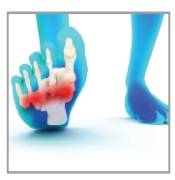
This painful and common condition is often accompanied by hard skin (callus) and it can feel as if you are standing on a small stone. High heels are known to contribute to this condition. However, it is largely caused by a strain on the ligaments and joint capsules in the forefoot.
If the foot is not in an efficient position then these soft tissue structures have to work harder to compensate. Over time, they become less capable of supporting the structure of the forefoot – hence the pain. Wear and tear occurs because the other components are not designed to cope with the increased stress.
Heel Pain
Heel pain affects 1 in 4 of us at some point in our lives and can be very painful. This is largely because we are walking on unnatural hard surfaces and the foot has to adapt accordingly.
As the foot adapts, the arch can flatten. Over time, this causes strain on a structure called the plantar fascia which runs along the bottom of the foot. This is why the condition is sometimes referred to as “Plantar Fasciitis”.
The heel bone (Calcaneus bone) often becomes a point of pain because of the continual pulling and stretching where it attaches. In some people, this can also develop into a bony spur known as a “heel spur”. Heel pain is also be caused by the lack of shock absorption as our heel comes into contact with the hard ground.
Orthotic insoles incorporate a contoured arch profile, which is designed to prevent the excessive flattening of your feet when walking. Heel cushions can also be added to offer enhanced shock absorbency in the heel area.

Overview
Leonardo Da Vinci once said that “the human foot is a masterpiece of engineering and a work of art”, and he’s right! Our feet are made up of 52 bones, 40 muscles, and 214 ligaments. They all work together to enable us to go about our daily activities.
For thousands of years, humans walked the Earth on naturally accommodating surfaces, because that’s what they evolved to do. Today, however, we walk mainly on hard, unforgiving surfaces, like pavements, concrete, wooden, and tiled floors. This is where our feet need a little help to compensate for such an unnatural environment.
Our feet are highly specialised pieces of natural bioengineering and should be treated as such.
Think of a car. If the tyres weren’t properly balanced or one of them was underinflated, this would cause all sorts of problems.
The same is true of our feet. If they are not supported correctly, then all sorts of problems are likely to occur. These problems do not end at our feet either. They can extent to our legs, knees, hips, and back, depending on the issue.
Just like we wouldn’t neglect our car’s MOT or servicing, we shouldn’t neglect the needs of our feet.
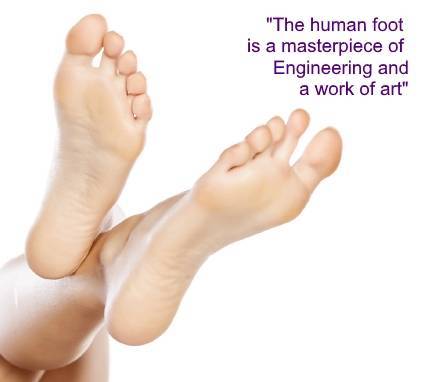
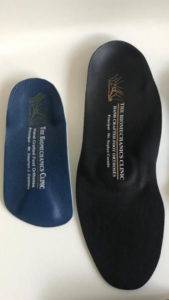
Orthotic Insoles
Orthotic insoles are engineered with these problems in mind. They are designed to maintain our feet in their optimum position to allow us to walk normally without causing problems elsewhere in our bodies. Effectively orthotic insoles are our “high spec” tyres to keep us pain free.
Biomechanics Clinic Cardiff
To arrange an appointment at our Biomechanics clinic in Cardiff, please contact us. We can assess your condition then recommend an effective treatment solution based on your needs.


